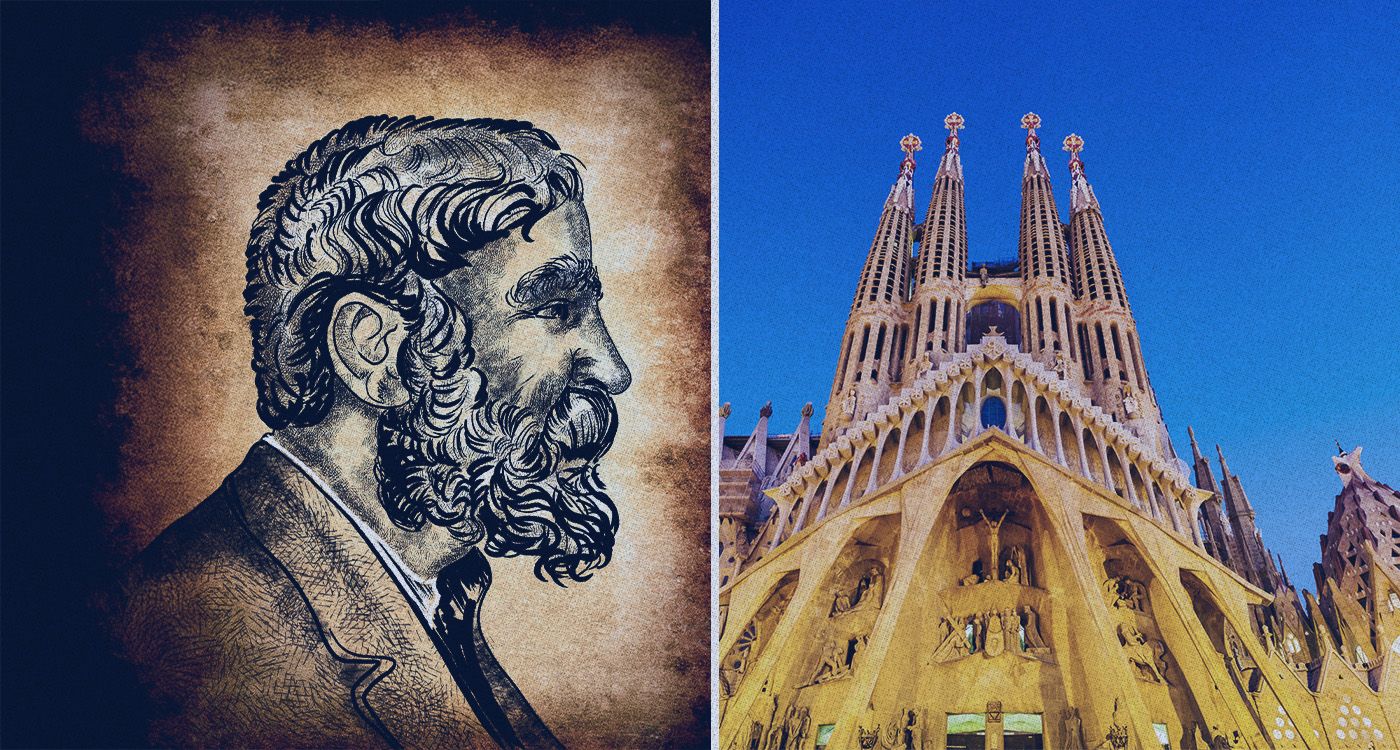
Antoni Gaudí has reached a decisive step toward beatification. Pope Francis has officially recognized the heroic virtues of the Catalan architect, granting him the title of “Venerable.” This tribute honors both his profound faith and his artistic genius.
On April 13, 2025, by official decree, Pope Francis recognized the heroic virtues of Antoni Gaudí, bestowing upon the famous Catalan architect the title of “Venerable.” This recognition marks a major milestone on the path to beatification, which could ultimately lead to the canonization of the man often referred to as “God’s architect.” Renowned worldwide for the Sagrada Familia – his unfinished basilica that has become a symbol of Barcelona – Gaudí is now honored by the Church for the depth of his spirituality. This papal decision crowns more than twenty years of effort. The beatification process began in 2000 in Barcelona, initiated by Cardinal Ricard Maria Carles, and was forwarded to Rome in 2003. Since then, experts, theologians and doctors have carefully studied his life, work and spirituality. The declaration of “Venerable” follows the judgment by the Dicastery for the Causes of Saints that Gaudí lived the Christian virtues in an exemplary and “heroic” manner: faith, hope, charity, prudence, justice, fortitude and temperance.
A Spirituality Carved in Stone
This recognition from the Vatican will come as no surprise to those familiar with Gaudí’s life and work. Deeply devout and steeped in liturgy and contemplation, the architect saw his art as an extension of his faith. From the 1880s onward, he devoted himself almost exclusively to the Sagrada Familia, adopting an ascetic lifestyle within the basilica’s workshop itself. He led an austere, nearly monastic existence – sharing his meager resources with the poor, sleeping on a straw mat, and dedicating himself entirely to prayer, work and meditation. His architecture itself became a prayer in stone. The organic forms, plays of light, symbolic proportions and naturalistic elements of his creations reflect a desire to mirror divine creation in human art. The Sagrada Familia – which Gaudí saw only partially completed (the crypt and the Nativity façade) before his tragic death in 1926 – is now regarded not only as a masterpiece of Art Nouveau but as a pinnacle of spiritual architecture.
The Beatification Process: A Long Journey to the Altars
The path to canonization consists of four main stages: Servant of God, Venerable, Blessed and finally, Saint. The opening of a beatification cause marks the first phase, granting the title of “Servant of God.” Next comes a thorough examination of the candidate’s life, writings and behavior to determine whether they practiced Christian virtues in a heroic way – a step Gaudí has now completed.
In order to proceed to beatification, a miracle must be attributed to the candidate’s intercession. This miracle, often a medically inexplicable healing, is evaluated by a Vatican scientific commission, then by theologians, and ultimately by the pope.
Once the miracle is recognized, the person is declared “Blessed” and can be venerated locally. Canonization, which allows universal veneration throughout the Church, requires a second miracle.
In Gaudí’s case, a potential miracle is already under examination by the Vatican: a man reportedly healed of a malignant tumor after praying to the architect. If validated, this miracle would pave the way for beatification, though nothing has yet been officially confirmed. Gaudí’s potential beatification reflects a broader desire by the Church to highlight contemporary figures – people who, though close to our modern concerns, lived their faith with inspiring radicality.
Gaudí, a man of the 19th century, continues to resonate today through his unique fusion of faith and modernity, contemplation and creativity. His personal commitment also responded to the tensions of his time: he lived in a Catalonia marked by social conflict, rising anti-clericalism and the struggle for Catalan identity. Yet Gaudí did not withdraw from the world. He planted his Christian roots in it, sought harmony within it, and offered through his work a transcendent vision of humanity – perhaps making him more relevant than ever.
An Artist’s Path to Holiness
Should his cause succeed, Gaudí would become one of the few artists canonized by the Catholic Church – and likely the only modern architect elevated to that dignity. This would reinforce his image as a divinely inspired creator, a mystical builder, and offer a new spiritual model for today’s artists, craftsmen and architects. Beyond religious circles, he emerges as a universal figure of devotion to goodness, beauty, and what truly matters.
Born in 1852 in Reus, Catalonia, Gaudí ranks among the greatest modern architects. A key figure of Catalan Modernism, he left a profound mark on Barcelona with his bold, organic and highly symbolic designs. His artistic vision – shaped by nature, geometry and spirituality – transformed each building into an absolute work of art. His most iconic creations include the monumental and still unfinished Sagrada Familia; the dreamy Parc Güell, a blend of sculpture, mosaic and architecture now a UNESCO World Heritage Site; and the residential masterpieces Casa Batlló and Casa Milà (La Pedrera), both landmarks of Barcelona’s urban landscape.
Gaudí died in 1926, struck by a tram on his way to Mass. His simplicity and modest appearance led many to mistake him for a homeless man. He now rests in the crypt of the Sagrada Familia, which he considered his ultimate offering to God.


Comments